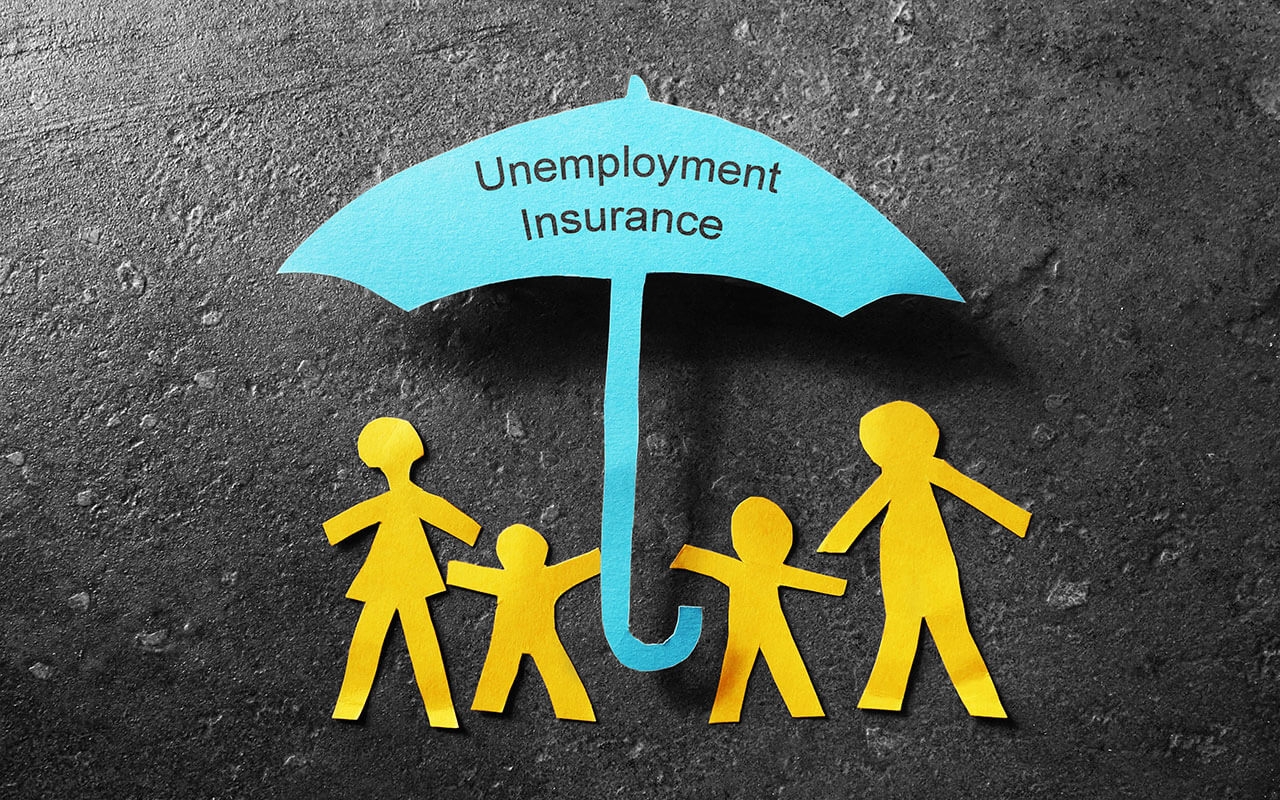U.S Insurance and Unemployment Benefits: Who Pays, Rates, How It Works
Unemployment benefits, also known as unemployment insurance, unemployment payment, unemployment compensation, or just unemployment, are monetary payments made to jobless people by government agencies. In the United States, benefits are paid for not by individual taxpayers' contributions but by a mandatory government insurance system. Those amounts may be minimal, providing only for the person's most basic needs, or they may compensate the lost time in a manner that is proportional to the previous earned salary, depending on the jurisdiction and the status of the person.
When facing a financial crisis, whether due to a pandemic or not, an unemployment check can be a lifeline. To ensure that American workers were not unjustly fired, the federal government and individual states formed a partnership in 1935. The system, commonly referred to as unemployment insurance, is funded by employer-paid taxes and managed by individual states.
Take a look at what is Unemployment Benefits, how it works, its rate, and other useful information that you need to know.
 |
| What Is Unemployment Benefits: Who Pays, Rates, How It Works, Other Information Knowinsiders.com |
| Table Of Content |
What is Unemployment Benefits?
 |
| Photo: iStock |
Unemployment benefits, also called unemployment insurance, unemployment payment, unemployment compensation, or simply unemployment, are payments made by authorized bodies to unemployed people. In the United States, benefits are funded by a compulsory governmental insurance system, not taxes on individual citizens. Depending on the jurisdiction and the status of the person, those sums may be small, covering only basic needs, or may compensate the lost time proportionally to the previous earned salary.
Unemployment benefits are generally given only to those registering as becoming unemployed through no fault of their own, and often on conditions ensuring that they seek work.
In British English unemployment benefits are also colloquially referred to as "the dole"; receiving benefits is informally called "being on the dole". "Dole" here is an archaic expression meaning "one's allotted portion", from the synonymous Old English word dāl.
Unemployment Benefits: History
 |
| Photo: Benefits.gov |
The first modern unemployment benefit scheme was introduced in the United Kingdom with the National Insurance Act 1911, under the Liberal Party government of H. H. Asquith. The popular measures were to combat the increasing influence of the Labour Party among the country's working-class population. The Act gave the British working classes a contributory system of insurance against illness and unemployment. It only applied to wage earners, however, and their families and the unwaged had to rely on other sources of support, if any. Key figures in the implementation of the Act included Robert Laurie Morant, and William Braithwaite.
By the time of its implementation, the benefit was criticized by communists, who thought such insurance would prevent workers from starting a revolution, while employers and tories saw it as a "necessary evil".
The scheme was based on actuarial principles and it was funded by a fixed amount each from workers, employers, and taxpayers. It was restricted to particular industries, particularly more volatile ones like shipbuilding, and did not make provision for any dependants. After one week of unemployment, the worker was eligible for receiving 7 shillings/week for up to 15 weeks in a year. By 1913, 2.3 million were insured under the scheme for unemployment benefit.
Expansion and spread
The Unemployment Insurance Act 1920 created the dole system of payments for unemployed workers in the United Kingdom. The dole system provided 39 weeks of unemployment benefits to over 11 million workers—practically the entire civilian working population except domestic service, farmworkers, railroad men, and civil servants.
Unemployment benefits were introduced in Germany in 1927, and in most European countries in the period after the Second World War with the expansion of the welfare state. Unemployment insurance in the United States originated in Wisconsin in 1932. Through the Social Security Act of 1935, the federal government of the United States effectively encouraged the individual states to adopt unemployment insurance plans.
 Facts About FUTA: What Is It, History, How It Works Facts About FUTA: What Is It, History, How It Works The Federal Unemployment Tax Act (FUTA) is a piece of legislation that imposes a payroll tax on any business with employees. So, what is it, ... |
Understanding Unemployment Insurance (UI)
The unemployment initiative is a joint program between individual state governments and the federal government. Unemployment insurance provides cash stipends to unemployed workers who actively seek employment. Compensation to eligible, unemployed workers is made through the Federal Unemployment Tax Act (FUTA) along with state employment agencies.
Each state has an unemployment insurance program, but all states must follow specific guidelines outlined by federal law. Federal law makes unemployment benefits relatively ubiquitous across state lines. The U.S. Department of Labor oversees the program and ensures compliance within each state.
Workers who meet specific eligibility requirements may receive up to 26 weeks of benefits a year. The weekly cash stipend is designed to replace a percentage of the employee's regular wage, on average. States fund unemployment insurance using taxes levied on employers. The majority of employers will pay both federal and state unemployment FUTA tax. Companies that have 501(c)3 status do not pay FUTA tax.
Three states also require minimal employee contributions to the state unemployment fund. Reportable income includes freelance work or jobs for which unemployment insurance recipients were paid in cash.
Out-of-work persons who do not find employment after a 26-week period may be eligible for an extended benefits program. Extended benefits give unemployed workers an additional number of weeks of unemployment benefits. The availability of extended benefits will depend on a state's overall unemployment situation. If you have become unemployed due to the coronavirus pandemic, see below for details of the various programs.
Who Pays for Unemployment Insurance?
 |
| Who Pays for Unemployment Insurance - Photo: Shutterstock |
If you get an unemployment check in the mail, the return address will be your state's Department of Labor, but that doesn't mean that the government is funding your unemployment benefits. It's all paid for by your employer. In fact, employers pay two types of unemployment insurance taxes for each of their workers: federal and state.
The federal unemployment tax, known as the FUTA (Federal Unemployment Tax Act) tax, isn't too bad. It's listed as 6 percent of the first $7,000 in earnings for each employee, but most employers pay far less. If the employer also pays unemployment taxes to an approved state program, then the feds will refund 5.4 percent of that 6 percent tax, leaving employers on the hook for only the remaining 0.6 percent. The maximum amount of FUTA tax per worker per paycheck is $42. FUTA tax is used to make loans to states for unemployment funds, to cover half of extended benefits during long periods of high unemployment and to cover administrative costs.
Requirements for Unemployment Insurance (UI)
To receive unemployment benefits, a job seeker must first meet two primary criteria. An unemployed person must reach minimum requirements for either earned wages or hours worked within a specified time period, as determined by state law. In addition, the state must agree that the applicant's inability to find work is due to circumstances beyond their control. When these two conditions are met, an individual is eligible to submit an application for unemployment insurance.
Claims are submitted by individuals in the state where they last held employment. Individuals can either call or go online to the state's unemployment insurance agency to submit their claims. It usually takes two to three weeks for a claim to be processed and approved after the initial application has been submitted.
Once a claim is approved, the participant must submit reports every week or every other week to verify or verify their employment status. In order to continue receiving benefits, it is necessary to submit periodic reports. An unemployed person is required to report all freelance or consulting income on their weekly or biweekly claims, and they must accept any work that comes their way during the week.
The Structure and Goals of the UI SystemState governments have considerable leeway in implementing UI because it is a shared federal-state program. According to the Social Security Act's blueprint, crafted by Franklin D. Roosevelt's Committee on Economic Security, "The States shall have broad freedom to set up the type of unemployment compensation they wish." The federal government places few restrictions on state unemployment insurance systems, but those that are in place are there to guarantee that beneficiaries receive at least a bare minimum of protection and that the program can act as a stabilizing force during economic downturns. Unemployment compensation is defined by federal law as "cash benefits payable to individuals with respect to their unemployment" and is subject to a few basic requirements, including but not limited to the following two: "all funds drawn from the State's Unemployment Fund shall be used solely in the payment of Unemployment Compensation"; and A state cannot impose onerous "methods of administration" that prevent access for people who are otherwise qualified. As a result of these mandates, states must keep in place programs that provide some measure of protection to workers with adequate employment histories who lose their jobs due to circumstances beyond their control. Within these bounds, individual states have wide latitude in determining factors like employer tax rates, benefit levels and duration, and eligibility criteria like the minimum number of years of prior employment required to receive benefits. |
Different Rates in Different States
 |
| Photo: Getty Images |
Normal unemployment benefits are funded by state unemployment taxes, which are typically much higher. However, state tax rates vary widely from one another, with some states likely maintaining low rates to entice businesses to relocate there or remain there. According to Michele Evermore, senior policy analyst with the National Employment Law Project, "tax rates range from almost zero percent to 10 percent of wages," with some states only taxing the first $7,000 of wages and others taxing up to the first $49,000 of pay.
The lower the unemployment tax rate, the less money workers will receive in unemployment benefits because the program relies almost entirely on money collected from businesses. For instance, Florida has one of the lowest unemployment tax rates in the country, at only 0.1% on the first $7,000 of earnings. Thus, Florida's aid to unemployed people is not particularly generous.
The average benefits in Florida are lower than the national average, and the state is tied with North Carolina for the shortest benefit period, according to Evermore. Workers in Florida have a much shorter unemployment benefit period of 12 weeks compared to the average of 26 weeks across all states.
It's interesting that not all businesses in the same state pay the same rate of unemployment insurance tax. Since unemployment benefits are insured, companies with a higher frequency of claims must pay a higher premium. Companies with high rates of layoffs and benefit usage are penalized by this "experience rating" system by having higher rates of unemployment insurance premiums.
Who Is Eligible for Unemployment Benefits?
Unemployment benefits have been made available to nearly all unemployed workers during the COVID-19 crisis, including those who are self-employed, freelancers, and gig workers. However, only a small fraction of workers during normal economic times are eligible for benefits.
You can collect unemployment if you were a full- or part-time worker, you lost your job through no fault of your own, and you made the required amount of money. Again, each state writes its own rules.
This means that in most cases, unemployment benefits will only be granted if:
You lost your job due to a downsizing, and now you're unemployed.
It's true that you were let go as part of a larger group at your company.
Since this was seasonal employment that ended when the season did, there is no hope of being rehired in the future.
You, on the other hand, are not eligible for unemployment benefits if:
Because of your bad behavior, you were let go from your job.
But there are exceptions to this rule, and in those cases you might still be eligible for unemployment benefits even after you've resigned. Examples of what Evermore calls "good cause quits" include leaving a job due to health and safety violations, or leaving to follow a spouse who received a job offer in another state. The eligibility determination will be made by the relevant state agency.
Unemployment benefits are subject to financial eligibility requirements as well. Over the "base period," a time frame specified by the employer, you must have made a certain amount of money in order to qualify for the bonus. Each state determines its own minimum, but it typically isn't less than $3,000. The base period is the first four quarters (one year) of the base period.
Do All The Unemployed Get UI?
No. Benefits for the unemployed are rarely granted during normal economic times. Voluntary job losers, first-time job seekers, and those who have been out of the workforce for an extended period of time are not eligible for unemployment insurance. Workers who are self-employed, freelancers, illegal immigrants, and students are traditionally ineligible for unemployment insurance.
Furthermore, in order to qualify for unemployment benefits in most states, jobless individuals must meet either a minimum number of qualifying work credits or a minimum amount of qualifying earnings from their previous employer. In 2019, the minimum wage needed to qualify for unemployment insurance was between $1,000 and $5,000. The unemployment insurance (UI) recipiency rate, or the percentage of unemployed people actually receiving UI benefits, varies widely across states because of these varying eligibility requirements. The fourth quarter of 2019 saw the lowest recipiency rate (9%) in Mississippi and the highest (55% in Massachusetts).
Also, because of earnings and work history requirements, low-wage workers, who are statistically more likely to become unemployed, have a lower chance of receiving unemployment insurance benefits. Just 25% of workers earning less than the state's 30th percentile wage received UI benefits during the Great Recession. Workers whose pre-unemployment income was higher than the 30th percentile were twice as likely to collect unemployment insurance. In most cases, low hourly wages are not the reason an employee is not eligible for unemployment benefits. Instead, low-wage workers are more likely to have irregular work schedules, and the majority of states require that workers who have been laid off have at least some consistent income over the previous year in order to receive the full length of unemployment benefits.
How Big Is the Unemployment Check?
How much of a portion of your previous salary will be deducted from your unemployment check is determined by both your current location and your previous salary. Unemployment benefits are more stingy in states with low unemployment tax rates, as we've already mentioned. The amount of an individual's weekly unemployment check can vary widely, from below $100 to over $1,000. In 2019, the national average was $347 per week, or 32% of the typical workweek income.
Each state employs its own convoluted formula to calculate its own unique unemployment insurance premium. A person's annual salary is typically calculated by adding up their wages from the first four quarters of the previous five. Many jurisdictions use the highest-grossing quarter, while others average over the four. Each week's benefit is a percentage of your average weekly earnings, with a maximum set by each state.
24/7 Wallstreet reports that Massachusetts has the highest weekly unemployment benefits, at $515 (with a maximum of $823). About 48% of the state's unemployed were receiving unemployment insurance benefits in 2019, with most receiving them for 26-30 weeks. The second highest average weekly benefit check was in Hawaii, at $503. This is equivalent to 53% of the state's average weekly wage (the maximum benefit check is $648).
States like Florida, Tennessee, and North Carolina are on the opposite end of the spectrum. After only 12 weeks, Florida terminates benefits altogether and the maximum weekly benefit is $275. When compared to the rest of the country, Tennessee's average weekly benefit of $144 in 2019 was among the lowest in the country. There is a $275 limit on benefits as well. Just 10% of unemployed workers in North Carolina received benefits last year.
Obviously, cost of living can affect the duration of benefits, so a high benefit in a state with a low cost of living may not be preferable to a low benefit in a state with a high cost of living.
Can Unemployment Funds Run Out?
The answer is yes; they are able to and do so regularly. However, while it would be ideal for states to be able to use the money they collect from unemployment taxes during prosperous times to pay for benefits during recessions, this is not always the case. When state unemployment funds are depleted, as they were in many states during the Great Recession, the FUTA tax is used to provide emergency loans from the federal government.
After the Great Recession, California borrowed $10 billion from the federal government to bail out its unemployment fund; the state did not repay the loan in full until 2018. According to Evermore, the real victims of such scenarios are businesses, which must pay back the loan at higher FUTA tax rates during a time when they are trying to recover from a downturn. As reported by Tax Policy Center, 36 states' unemployment insurance (UI) budgets were so short during the Great Recession that they had to take out federal loans to make ends meet.
What Are the Four Types of Unemployment?The four types of unemployment include cyclical, frictional, institutional, and structural unemployment. How Is Unemployment Calculated?Unemployment is calculated by dividing the number of unemployed people by the number of people in the labor force. Who Is Counted as Unemployed?The unemployed include anyone that doesn't have a job, is available for work, and has been actively looking for work in the previous four years. Actively looking for work includes having job interviews or contacting employers. |
 Top 30 Highest Paying Jobs In Virginia Today Top 30 Highest Paying Jobs In Virginia Today Virginia is one of the most famous countries in the United States and these highest-paying jobs will help you have a pleasant and comfortable life ... |
 Top 30 Highest Paying Jobs Without A Degree In Richmond, Virginia Top 30 Highest Paying Jobs Without A Degree In Richmond, Virginia Richmond is one of the most famous cities in Virginia and these highest-paying jobs will help you have a pleasant and comfortable life without worrying ... |
 Amazing Facts About Apple Amazing Facts About Apple Are you interested in amazing fun facts about one of the most well-known companies worldwide - Apple and its products: the iPhone, the iPad and ... |
 Top 10 Best Online Jobs for Teens To Earn Money From Anywhere in the World Top 10 Best Online Jobs for Teens To Earn Money From Anywhere in the World It is difficult for teen to find online jobs anywhere in the world, but this article will help you with the 10 best online jobs ... |


























